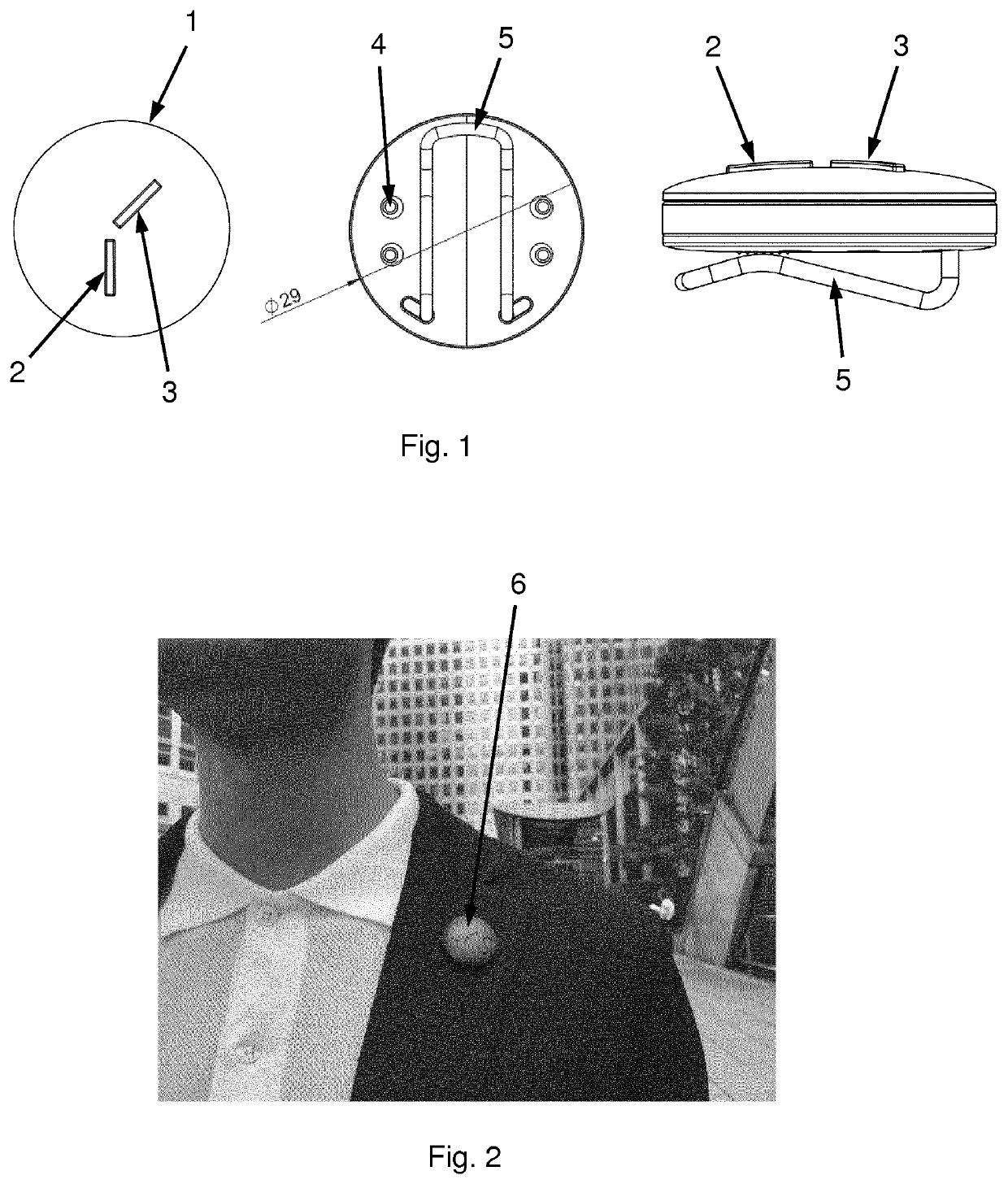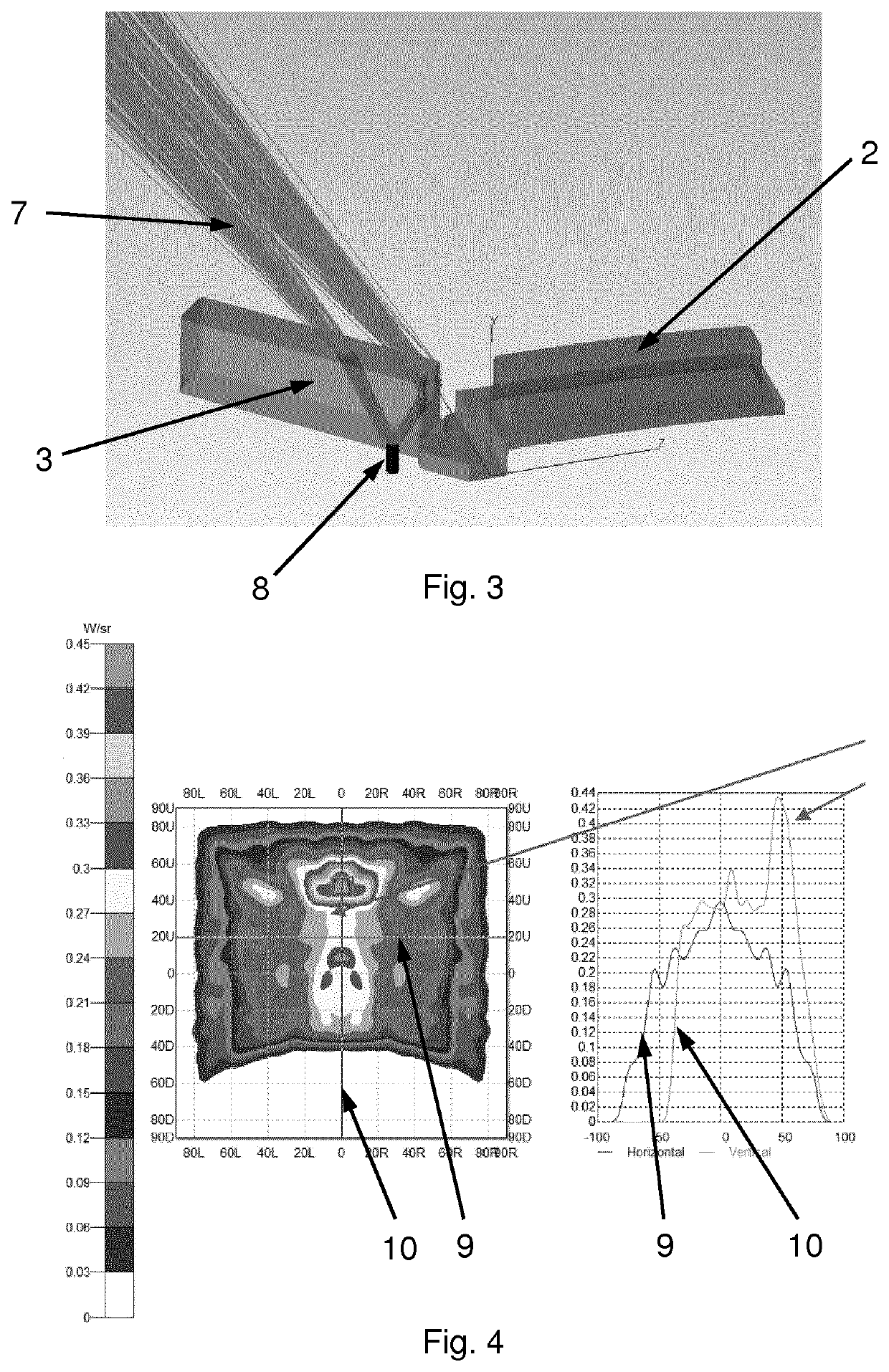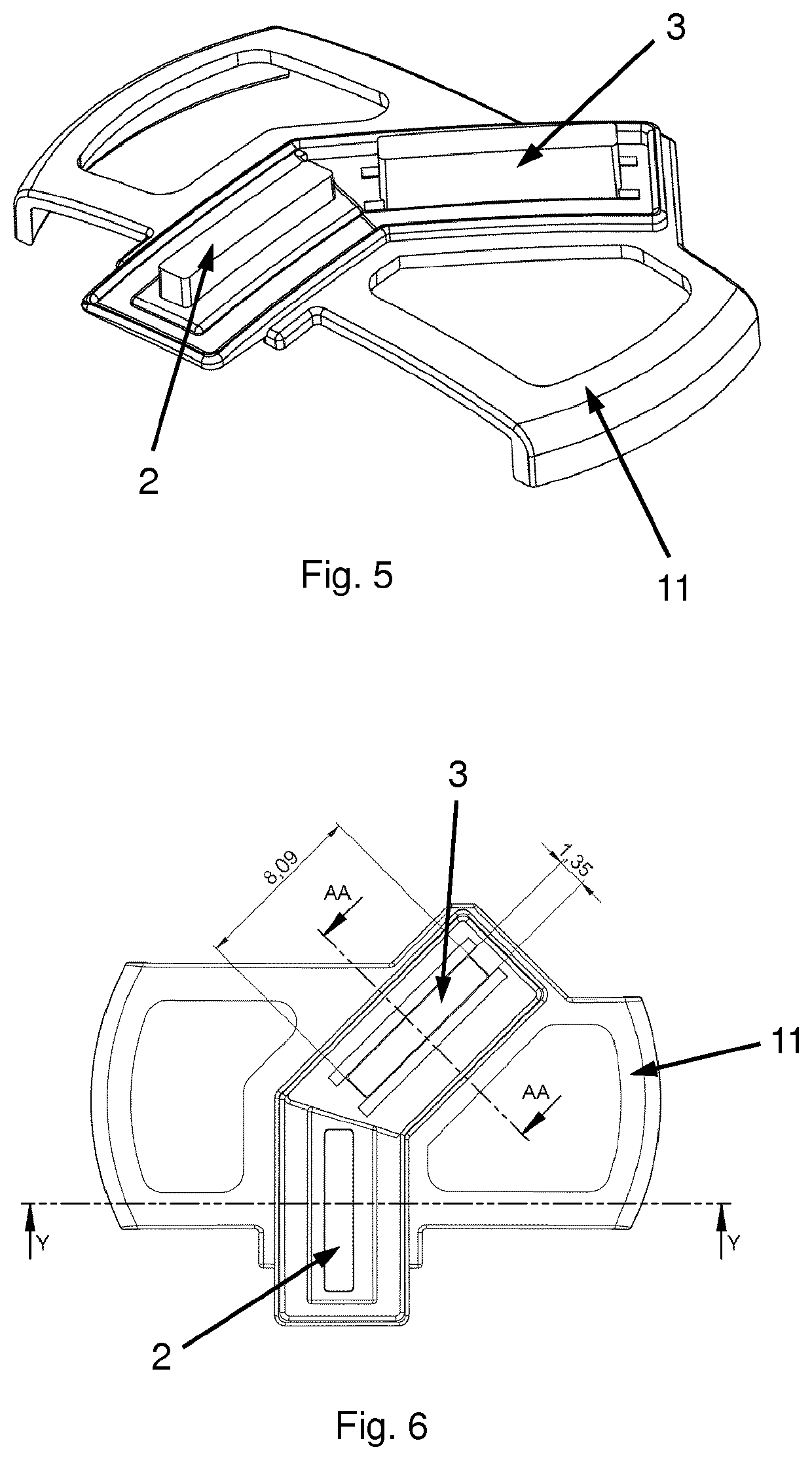Device for measuring light exposure of a subject
a technology for light exposure and subject, applied in the field of devices for measuring light exposure of subjects, to achieve the effect of accurate and realistic light measurement, high total effectivity, and efficient collection of ligh
- Summary
- Abstract
- Description
- Claims
- Application Information
AI Technical Summary
Benefits of technology
Problems solved by technology
Method used
Image
Examples
Embodiment Construction
[0028]The present disclosure relates to a wearable device for collecting and measuring the light exposure of a subject. A first aspect of the invention is constructed such that a light guide gathers incoming light and guides it to a light sensor. The light guide may have a wide variety of shapes for directing the light to the sensor. The device is preferably constructed such that the peak sensitivity of the device is in the correct direction and such that the light is gathered efficiently. In one embodiment, this is achieved by having at least part of the outer surface of the light guide exposed to incoming light in the shape of a sphere or part of a sphere, such as a hemisphere. The shape of the outer surface of the light guide may also be ellipsoidal, or form part of an ellipsoid, or it could be a polyhedron, or part of a polyhedron. Other shapes that may be suitable for the outer surface of the light guide include planar, paraboloidal, cylindrical, conical, cosine shape, a plural...
PUM
 Login to View More
Login to View More Abstract
Description
Claims
Application Information
 Login to View More
Login to View More - R&D
- Intellectual Property
- Life Sciences
- Materials
- Tech Scout
- Unparalleled Data Quality
- Higher Quality Content
- 60% Fewer Hallucinations
Browse by: Latest US Patents, China's latest patents, Technical Efficacy Thesaurus, Application Domain, Technology Topic, Popular Technical Reports.
© 2025 PatSnap. All rights reserved.Legal|Privacy policy|Modern Slavery Act Transparency Statement|Sitemap|About US| Contact US: help@patsnap.com



